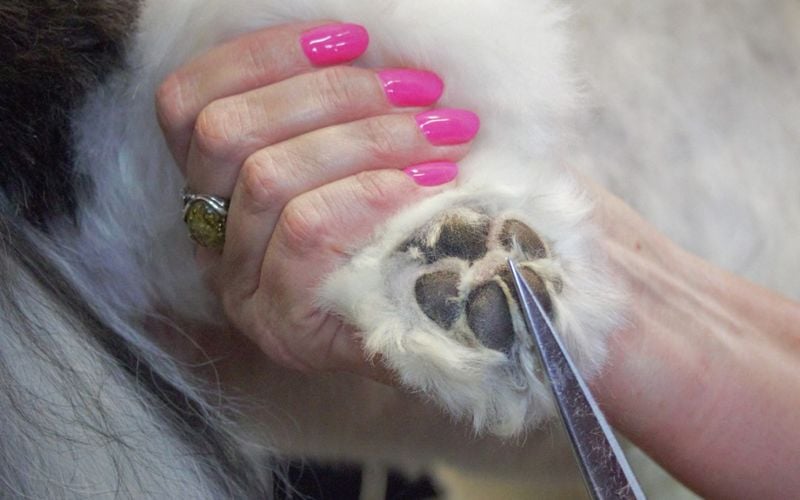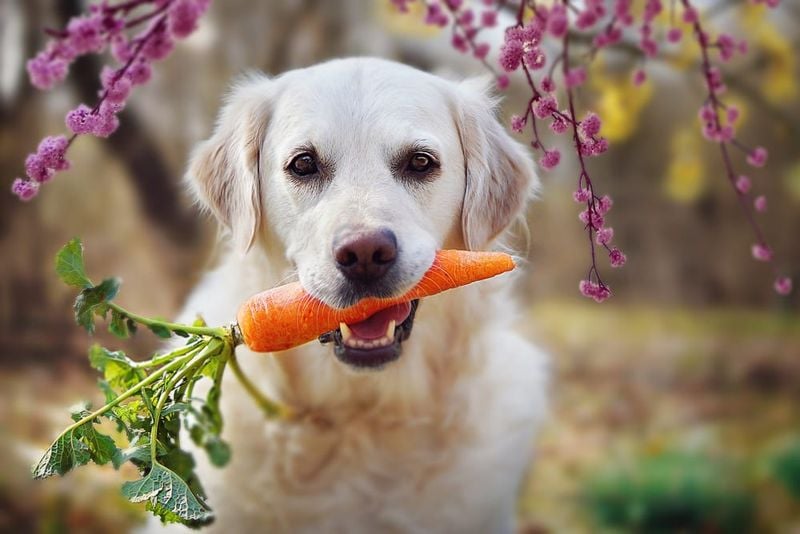Why Do Dogs Chew Their Paws? The Reasons Will Surprise You
You glance over at your dog and notice them gnawing on their paw—again. At first, it might seem harmless or even a bit cute, like they’re just grooming.
But when it turns into a habit, it’s time to ask: what’s really going on? Paw-chewing isn’t just quirky behavior—it can signal anything from allergies to anxiety. Some reasons are surprisingly serious, while others are downright unexpected.
Ignoring the signs could let a small issue snowball into something much worse. So before you chalk it up to a passing itch, let’s dig into the real causes. Here are the surprising reasons your dog might be chewing their paws—and what to do next.
Allergies (Food or Environmental)
Dogs may chew their paws to relieve itchiness caused by allergens like pollen, grass, or certain ingredients in their food. This can lead to redness and irritation, causing even more discomfort for your pet.
Environmental allergies are common, making outdoor play a challenge. Similarly, certain foods can trigger reactions. If you notice your dog chewing more during certain seasons or after meals, allergies could be the culprit.
A careful examination of your dog’s environment and diet may reveal the irritant. Veterinary advice can guide you in modifying their diet or routine, offering relief from this pesky issue.
Dry or Irritated Skin
Low humidity, frequent baths, or harsh shampoos can dry out their skin, making their paws flaky and itchy. These conditions cause discomfort, leading to increased chewing as dogs attempt to soothe the irritation.
Proper moisture levels are crucial for skin health. Sometimes, just a simple change in bathing habits or products can make a world of difference.
Consider moisturizing dog shampoos or reducing bath frequency. Environmental factors, like heaters in winter, can also contribute to dry skin. Observing these variables ensures a comfortable, itch-free life for your furry friend.
Parasites (Fleas, Ticks, Mites)
Infestations on or near the feet can cause extreme irritation, prompting obsessive chewing. These tiny invaders create a persistent itch that can drive dogs to distraction.
Regular checks are essential to catch these pesky parasites early. Fleas and ticks are particularly active in certain seasons, while mites can strike at any time.
Preventive treatments and good hygiene practices can keep these nuisances at bay. If your dog is scratching and chewing more than usual, it’s worth a closer look. A vet can offer the best advice for keeping your pet pest-free.
Injuries or Foreign Objects
A tiny splinter, thorn, or small cut can make a dog chew persistently to remove the source of discomfort. These minor injuries often go unnoticed at first.
Dogs use their mouths like we use our hands. A persistent focus on one paw can be a clue to an underlying issue. Inspecting your dog’s paws regularly helps catch these problems early.
Quick attention to cuts and foreign objects prevents infection and further irritation. Keeping an eye out for limping or excessive licking is equally important, offering a window into your dog’s well-being.
Yeast or Bacterial Infections
Paws are prone to moist, warm conditions—perfect for infections that cause itchiness and odor. Yeast or bacterial infections can make your dog’s paws incredibly uncomfortable.
You might notice a musty smell or a change in your dog’s behavior. Frequent licking and chewing are common signs. Prompt veterinary assistance can diagnose the issue and provide targeted treatment.
Maintaining clean, dry paws helps prevent these infections. Regular grooming and drying after walks or baths are good practices. Your attentive care can keep your dog’s paws healthy and happy.
Pain from Arthritis or Joint Problems
Chewing might be a response to pain radiating to the paws from deeper joint issues. This behavior is often seen in older dogs suffering from arthritis or other joint problems.
The discomfort can lead to paw chewing as they try to alleviate the pain. Recognizing changes in mobility or behavior aids in early detection.
Veterinary care, including pain management and lifestyle adjustments, offers relief. Observing your dog’s movements and responses helps in understanding their comfort levels. A proactive approach ensures they continue enjoying life’s adventures, even in their golden years.
Obsessive Compulsive Disorder (OCD)
Repetitive paw-chewing can become a compulsive behavior, especially in stressed or anxious dogs. This pattern resembles certain types of OCD seen in humans.
Triggers can include changes in routine, environment, or family dynamics. Recognizing these changes and their effects on your pet can be crucial.
Professional training and behavioral interventions often help manage this condition. Providing a stable, comforting environment can reduce anxiety. Engaging toys and activities also distract from compulsive behaviors, fostering a happier, more relaxed companion.
Stress, Boredom, or Anxiety
Like humans biting nails, dogs may chew paws as a calming or distracting behavior. This habit often emerges from stress, boredom, or anxiety.
A lack of mental and physical stimulation can lead to such behaviors. Ensuring adequate exercise and playtime is vital for a content, balanced dog.
Creating a stimulating environment with toys and activities can alleviate these feelings. Understanding your dog’s triggers and needs makes a significant difference in managing this behavior.
Contact Dermatitis
Chemicals in cleaning products, lawn treatments, or deicing salts can irritate their paws on contact. This irritation often leads to excessive licking and chewing.
Understanding what your dog comes into contact with helps identify potential allergens. Adjusting household products and routines can prevent these reactions.
Regularly washing your dog’s paws after walks or exposure to chemicals can mitigate irritation. This proactive care ensures their comfort and well-being, allowing them to explore without discomfort.
Hormonal Imbalances
Conditions like hypothyroidism can cause skin changes that make dogs chew more frequently. These hormonal imbalances affect the skin’s texture and sensitivity, leading to discomfort.
Monitoring your dog’s health and behavior helps in early detection. Lethargy, weight gain, or changes in coat quality might signal an underlying issue.
Veterinary testing and treatments can address these imbalances, restoring your dog’s health and comfort. Awareness of these symptoms ensures timely intervention, promoting a healthier life for your pet.
Neurological Conditions
Nerve damage or neurological disorders might cause tingling or phantom sensations in the paws. These sensations can be distressing, leading to increased chewing as dogs try to find relief.
Recognizing neurological symptoms, like coordination issues or unexplained behaviors, can guide you to seek veterinary care.
Veterinary interventions can manage symptoms and improve quality of life. Understanding these conditions helps in providing the necessary support for your furry friend, ensuring they remain comfortable and content.
Poor Grooming Habits
Long nails or matted hair around the paw pads can lead to irritation and excessive licking or chewing. These grooming issues often go unnoticed until discomfort arises.
Regular grooming routines, including nail trims and fur maintenance, are essential for preventing these problems. Keeping your dog’s paws well-maintained is a simple yet effective way to ensure their comfort.
Professional grooming services or home care routines offer solutions. Attention to these details contributes significantly to your dog’s overall well-being, making their steps more comfortable.
Dietary Deficiencies
Lack of essential fatty acids or nutrients can affect skin health, leading to itchy or inflamed paws. A balanced diet is crucial for maintaining healthy skin and coat.
If your dog is experiencing paw problems, examining their diet might reveal deficiencies. Omega-3 fatty acids and other nutrients play vital roles in skin health.
Consulting with a veterinarian or pet nutritionist helps in tailoring a diet plan to meet your dog’s needs. Proper nutrition ensures not just paw health, but overall vitality and happiness for your pet.
Habit Formed from Past Trauma
If chewing helped relieve discomfort once, such as from an old injury, a dog might continue out of habit. These habits can linger long after the initial cause has healed.
Understanding your dog’s history provides insight into their behaviors. Trauma-informed care and observation allow you to address the root cause.
Behavioral therapy and positive reinforcement can help break these habits. Your patient, understanding approach supports a healthier, more comfortable life for your loyal companion.




















